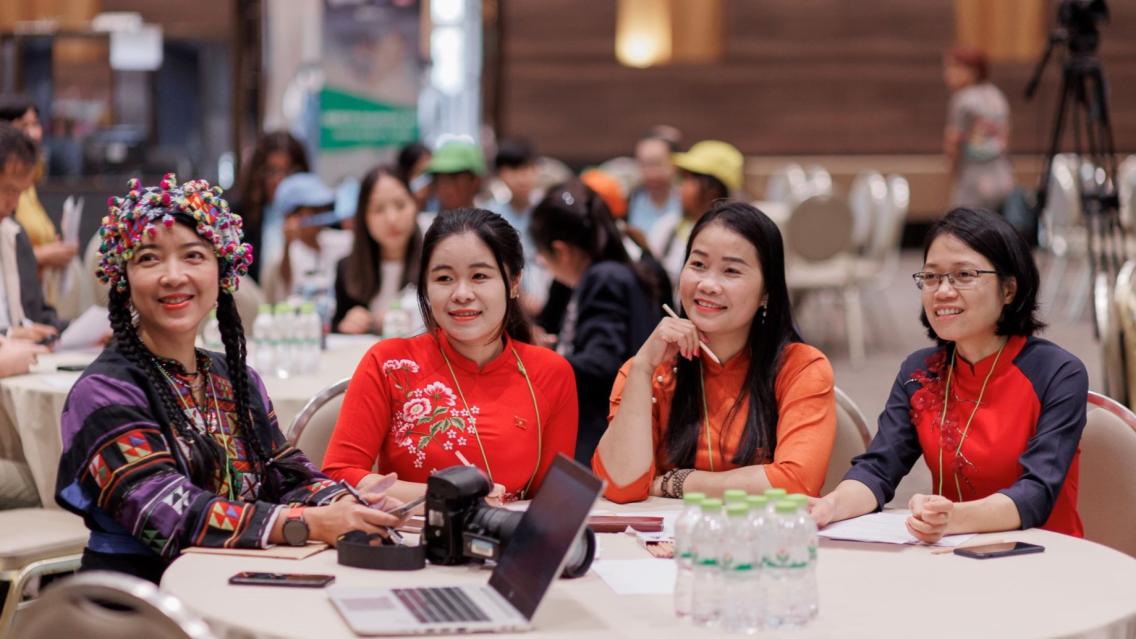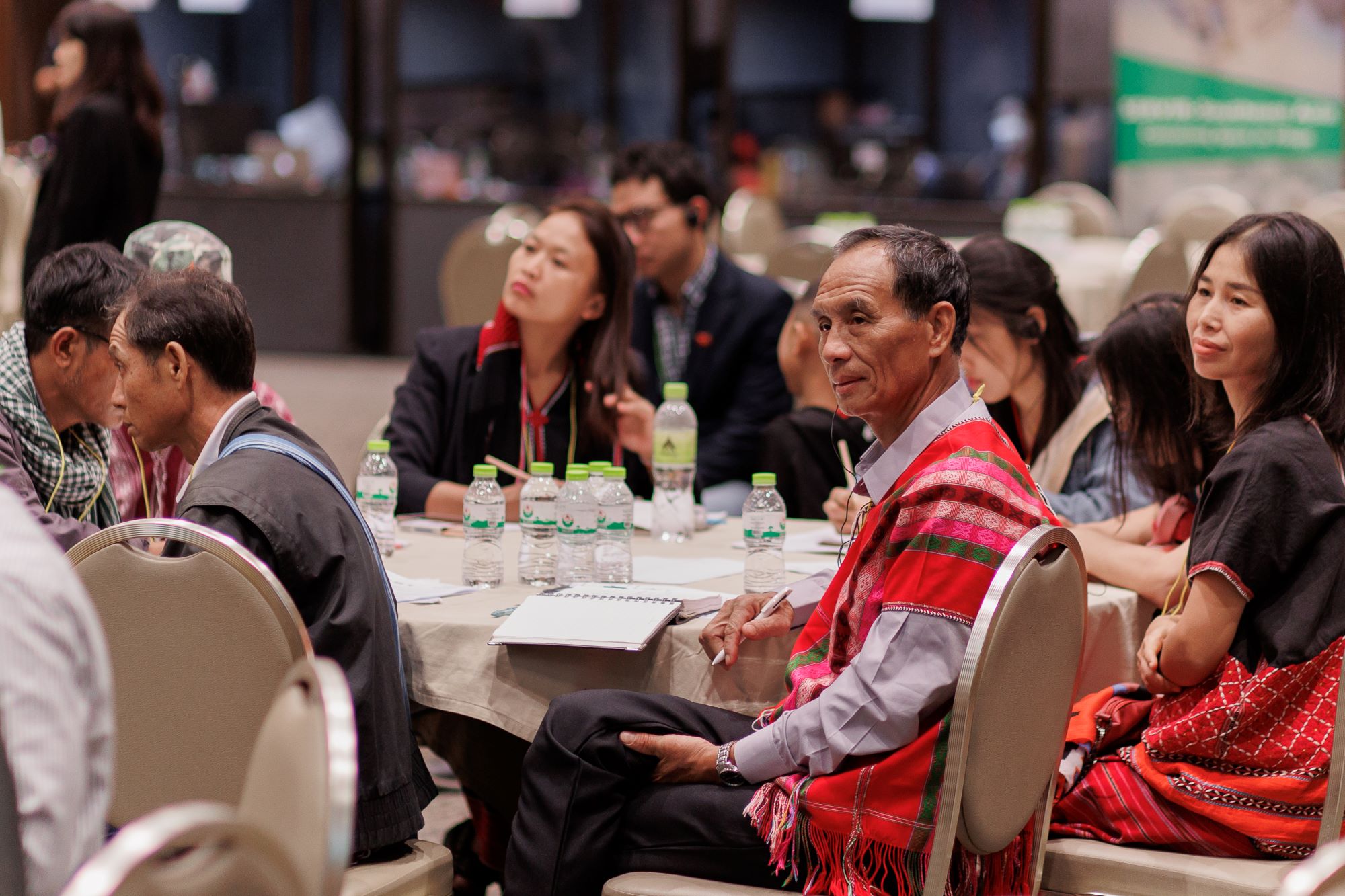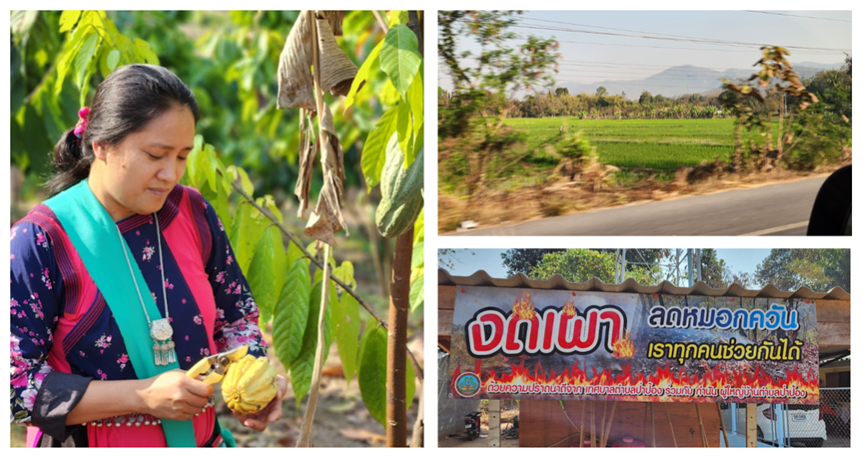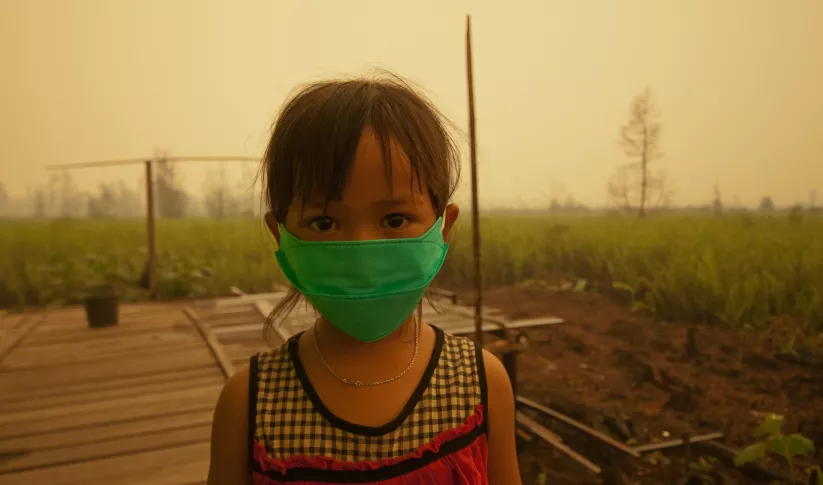Three Lessons on Inclusive Climate Action in Southeast Asia

Earth and climate data don’t result in effective climate action if they only meet the needs of a few.
SERVIR Southeast Asia convened nearly 100 participants from five countries for an Inclusive Climate Action Workshop in Chiang Mai, Thailand this February. The participants included representatives of Indigenous communities, women’s groups, and even kids, all ready to share ideas on how SERVIR can better serve the region.
Here are just a few takeaways from that week:
Amplifying Indigenous Voices in Land Management
Environmental issues like deforestation often most directly impact Indigenous communities. Collaboration with Indigenous voices is more than just being inclusive–Indigenous knowledge often provides vital context for making climate action more effective for everyone.
At the workshop, Kittisak Rattanakrajangsri, Chairperson of the Asia Indigenous Peoples Pact (AIPP), addressed some misconceptions about Indigenous knowledge. He noted that outsiders often imagine Indigenous knowledge as unscientific mysticism, but such knowledge is generally based on the same empirical observations as ‘conventional’ science. Indigenous knowledge may just appear to outsiders as ‘less scientific’ because it is often documented through oral tradition and contextualized within social and spiritual values.
“If you superimpose Indigenous land knowledge onto a land use map, Indigenous communities are going to understand those land uses in much greater detail,” Rattanakrajangsri said. “In many Indigenous communities, the status quo is largely maintained through ritual [routines and social norms]. As such, communities become keenly aware of change and interconnections.”
Other presenters also noted that in Southeast Asia, misconceptions can create conflict between environmental movements and Indigenous groups. As rapid economic growth in the region fuels deforestation and ecosystem loss, Indigenous communities are often pressured to relocate, or are even blamed as a cause of environmental degradation.
“Land rights are in decline due to the demand for green spaces,” said Pirawan Wongnithisathaporn, a program officer for the AIPP. “We can feel the air, we can see the sky, we can hear the frogs and we know that the climate is changing… but communities are often taking rights from Indigenous groups in their effort to adapt to climate change.”

Diversifying Perspectives on Air Quality
According to the World Health Organization, over 33,000 deaths in Thailand were attributable to ambient air pollution in 2016.
Air quality was a major theme of the Inclusive Climate Action Workshop, and panelists pointed to the need to bring women, Indigenous groups, and kids into the conversation. Guests included an elementary school class representing the Blue Schools program, an initiative in Thailand that seeks to inspire student activism on air pollution. Using air quality monitors in their classrooms, the program educates students about air pollution and encourages them to start conversations with their families.
Speakers also emphasized working with Indigenous communities on air quality. Those in Indigenous communities are more likely to work outdoors and to lack air conditioning. As such, smoke exposure is often as much a rural issue as it is in major cities.
Siriya “Sunny” Pulek, a panelist from the Lisu Indigenous community, saw the effects of air pollution on Thailand’s Indigenous communities during her 17 years working as a nurse. Now an entrepreneur and social media influencer, she educates communities about air pollution and alternatives to agricultural burning. Her panel noted that the use of agricultural burning fosters a stigma against Indigenous communities as polluters, but that Indigenous communities are often the most affected by pollution and are important allies in addressing air quality. According to Pulek, many wouldn’t engage in the burning if they knew more about affordable alternatives.

Designing More Inclusive Tools
Inclusivity and representation don’t just come into play during initial consultations with communities–they are important considerations in how apps and tools are designed.
Juliet Paclay is a rice farmer and retired community coordinator from the Kalinga Indigenous community of the northern Philippines. In a focus group on managing droughts and floods, Paclay shared how web applications for Earth data can be designed to be more accessible.
“In our community, not everyone speaks English or can access higher education, so not everyone can use data that is described only in technical English,” Paclay said. Though English is prevalent as a second language across much of Southeast Asia, even national majority languages like Filipino, Thai, or Vietnamese may not be accessible to rural or Indigenous communities where minority languages are common. Technical terminology may also create an obstacle for users even when translation is available. “Maybe there could be a simplified version, or versions using regional languages. Visuals are also important for accessibility, because there may not be a translation, or some in the community may not be able to read.”
Paclay emphasized that communities may expect or benefit from climate data that is contextualized with specific guidance–illustrations and recommended precautions, rather than just raw data like flood depth.
In regions where fast WiFi isn’t widely available, accessibility also means optimizing data applications for mobile devices. In rural areas like Paclay’s community, phones are much more prevalent than personal computers. Data in the form of alerts are likely to reach more people if they’re designed to be distributed on cell phones via social media.
SERVIR Southeast Asia (SERVIR SEA), a joint initiative of USAID, NASA, and ADPC, uses publicly-available satellite data and geospatial technologies to help communities across Southeast Asia adapt to regional and transboundary climate issues and mitigate the impacts of climate change. For more, see: servir.adpc.net.


